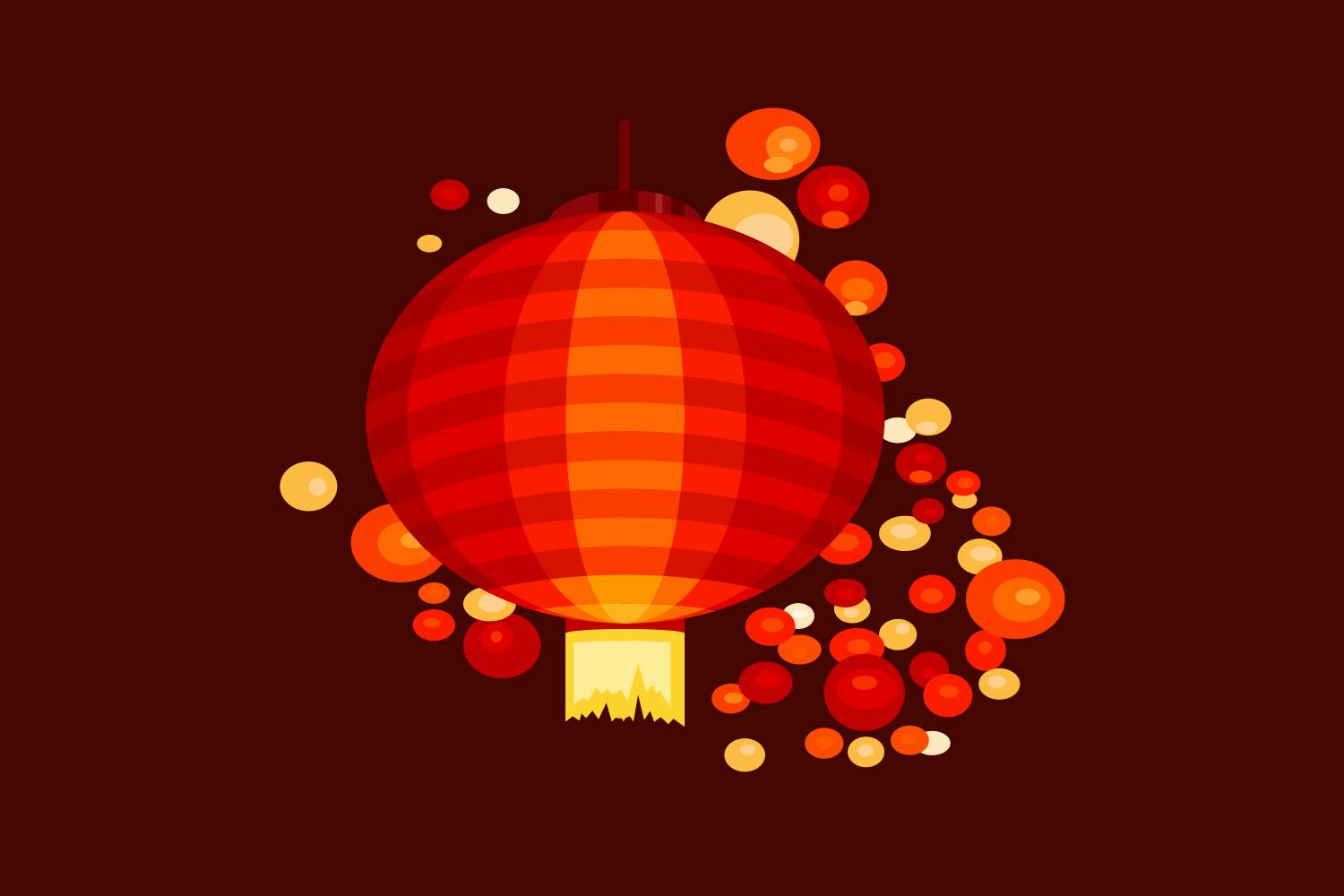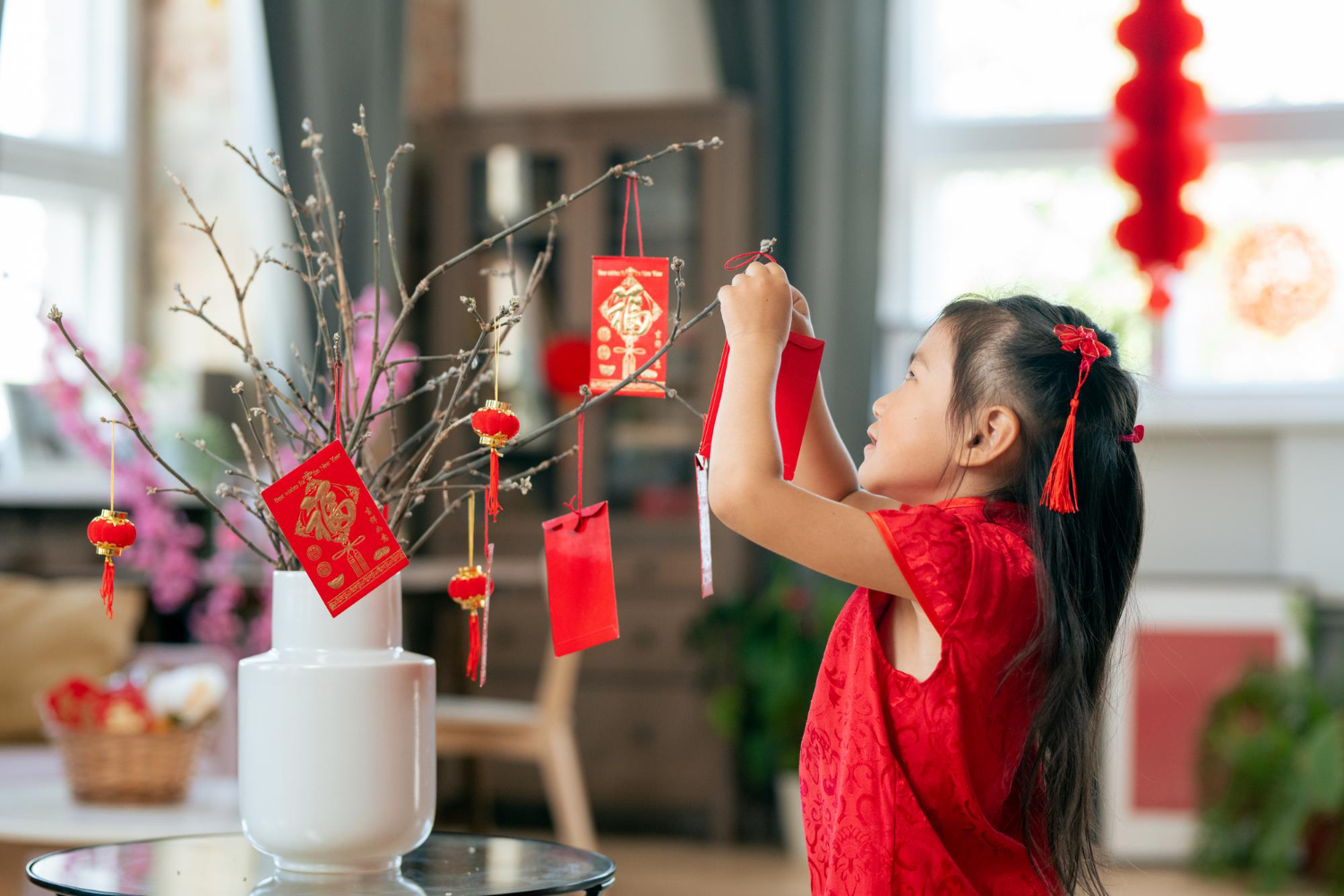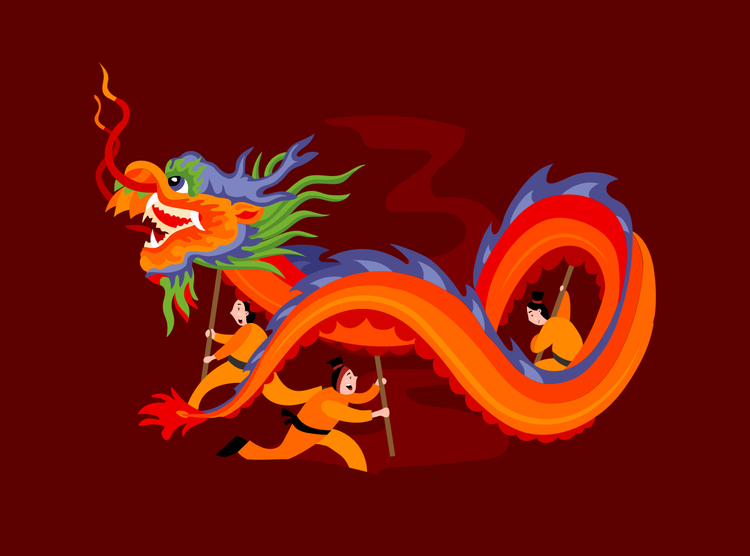Celebrating the Lunar New Year: Traditions, Festivities, and Cultural Significance


You will get a promo code with a discount for our app courses after reading this article.
Contents
Lunar New Year, also known as the Spring Festival, is a joyous celebration embraced by millions worldwide, with approximately 2 billion people participating across the globe. This significant occasion holds a special place in East and Southeast Asian cultures, taking center stage as the most important holiday in China.
In this article, we embark on a journey to unveil the roots of Lunar New Year, explore its unique traditions, and witness the diverse ways this auspicious celebration unfolds across cultures. Join us in discovering the cultural richness and significance that make Lunar New Year a truly extraordinary and cherished occasion.
What is Lunar New Year?
Lunar New Year is a joyous celebration marking the arrival of spring and the commencement of a new year on the lunisolar calendar. It goes beyond a simple festivity, symbolizing the renewal of life and the beckoning of prosperity. Families gather, streets come alive with vibrant parades, and traditions abound, creating a rich tapestry of cultural expression.
Who Celebrates Lunar New Year?
This celebratory spirit resonates vibrantly in China, where Lunar New Year meaning is hailed as the most important holiday, weaving deep into the cultural fabric. Its influence warmly extends across borders, reaching South Korea, Vietnam, Malaysia, the Philippines, Indonesia, Singapore, Brunei, and communities with a robust overseas Chinese presence.
Remarkably, beyond Asia, the celebratory fervor of Lunar New Year spreads its wings globally. In San Francisco, California, the city proudly claims its Chinese New Year parade as the largest celebration of its kind outside of Asia. Interestingly, this tradition traces its roots back to the Gold Rush era of the 1860s when there was a significant influx of Chinese immigrants to the region. Since then, the city has continued to embrace and host a vibrant Chinese New Year celebration, creating a cultural bridge that spans continents.
When is Lunar New Year?
Delve into the ancient roots of Lunar New Year, intricately woven with China's agricultural heritage and the celestial dance of the moon. Sprouting from the wisdom of farmers who sought guidance from the moon in sowing and harvesting, this unique festival unfolds on the second new moon after the winter solstice, marking the commencement of a new annual cycle on the lunisolar calendar. While a solar year spans approximately 365 days, a lunar year encompasses around 354 days, lending a distinct rhythm to this celebration.
The festivities, observed between January 21 and February 20 on the Gregorian calendar, showcase the dynamism of Lunar New Year. In 2025, the jubilant celebrations kick off on January 29, ushering in several days of joyous revelry. Beyond the confines of traditional calendars, Lunar New Year dances to its celestial beat, aligning with a global rhythm where holidays like Rosh Hashana, Diwali, and Ramadan also find their ever-changing place. In China, this 15-day celebration paints a vibrant tapestry, marking not only the arrival of spring but a timeless celebration woven into the fabric of cultural heritage.
As we look ahead, let's explore the dates and corresponding Chinese New Year animals for the upcoming years:
| Lunar New Year Year | Lunar New Year Day | Lunar New Year Date | Lunar New Year Animal Sign |
| 2024 | Saturday | February 10, 2024 | Dragon |
| 2025 | Wednesday | January 29, 2025 | Snake |
| 2026 | Tuesday | February 17, 2026 | Horse |
| 2027 | Saturday | February 7, 2027 | Goat / Sheep |
| 2028 | Wednesday | January 26, 2028 | Monkey |
| 2029 | Tuesday | February 13, 2029 | Rooster |
| 2030 | Sunday | February 3, 2030 | Dog |
Chinese New Year Animal Symbolism
Beyond its temporal significance, Lunar New Year intricately weaves the vibrant tapestry of the Chinese zodiac. Each passing year in the Lunar calendar embraces one of the 12 zodiac animals, forming a cycle that aligns with the apparent journey of the sun through the cosmic realms. These 12 animals, including the rat, ox, tiger, rabbit, dragon, snake, horse, sheep, monkey, rooster, dog, and pig, serve as celestial markers, guiding the passage of time and infusing each year with distinct traits.
| Chinese Zodiac Sign | Years |
| Rat | ...1948, 1960, 1972, 1984, 1996, 2008, 2020… |
| Ox | …1949, 1961, 1973, 1985, 1997, 2009, 2021… |
| Tiger | …1950, 1962, 1974, 1986, 1998, 2010, 2022… |
| Rabbit | … 1951, 1963, 1975, 1987, 1999, 2011, 2023 ... |
| Dragon | … 1952, 1964, 1976, 1988, 2000, 2012, 2024 … |
| Snake | … 1953, 1965, 1977, 1989, 2001, 2013, 2025 … |
| Horse | … 1954, 1966, 1978, 1990, 2002, 2014, 2026 … |
| Goat | … 1955, 1967, 1979, 1991, 2003, 2015, 2027 … |
| Monkey | … 1956, 1968, 1980, 1992, 2004, 2016, 2028 … |
| Rooster | … 1957, 1969, 1981, 1993, 2005, 2017, 2029 … |
| Dog | … 1958, 1970, 1982, 1994, 2006, 2018, 2030 … |
| Pig | … 1959, 1971, 1983, 1995, 2007, 2019, 2031 … |
Complementing this cosmic dance, five elements—earth, water, fire, wood, and metal—are intertwined within the traditional lunar calendar, adding an additional layer of nuance. For example, the year 2024 unfolds as the Year of the Dragon, a majestic symbol last celebrated in 2012. This alignment with both animal and element forms a unique astrological signature, shaping the character of the year and contributing to the rich symbolism that defines Lunar New Year celebrations. As we delve into this cosmic narrative, the interplay of zodiac animals and elements adds depth to the cultural and astrological significance of this cherished tradition.
2024 - Dragon: Dragons are revered for their strength, vitality, and good fortune. Individuals born in the Year of the Dragon are often believed to be charismatic, ambitious, and endowed with natural leadership qualities.
2025 - Snake: The Year of the Snake is associated with wisdom, intuition, and grace. Those born in this year are thought to be perceptive, clever, and possess a keen sense of intuition.
2026 - Horse: Horses symbolize energy, strength, and a free spirit. People born in the Year of the Horse are often described as hardworking, intelligent, and possessing a boundless enthusiasm for life.
2027 - Goat/Sheep: Representing peace, kindness, and creativity, the Goat/Sheep is associated with a gentle nature. Those born in this year are believed to be artistic, compassionate, and harmonious individuals.
2028 - Monkey: The Year of the Monkey embodies intelligence, resourcefulness, and wit. Individuals born under this sign are thought to be clever, adaptable, and quick-witted.
2029 - Rooster: Roosters symbolize confidence, diligence, and loyalty. Those born in the Year of the Rooster are often characterized as punctual, hardworking, and possessing a strong sense of responsibility.
2030 - Dog: Dogs are associated with loyalty, honesty, and reliability. People born in the Year of the Dog are believed to be sincere, compassionate, and steadfast in their relationships.
These zodiac animals not only add a layer of cultural richness to Lunar New Year celebrations but also offer a personalized touch to the festivities, influencing traditions, customs, and even individual life paths. The symbolism tied to each animal creates a fascinating tapestry of beliefs and practices that contribute to the unique charm of Lunar New Year celebrations.
Why is Lunar New Year Not the Same as the New Year?
Lunar New Year distinguishes itself from the widely celebrated New Year on January 1st, weaving a unique cultural narrative deeply rooted in tradition. Unlike the conventional New Year, aligned with the Gregorian calendar, Lunar New Year adheres to the lunar calendar, signaling not just a divergence in time reckoning but also underscoring the cultural and historical significance embedded in the lunar cycle.
In contrast to the New Year on January 1st, often laden with religious undertones, Lunar New Year predominantly serves as a celebration of cultural rejuvenation, familial ties, and collective aspirations for prosperity. This distinction not only introduces a novel approach to timekeeping but also highlights the diverse ways in which cultures worldwide express the passage of time and the commencement of new beginnings.
What is the Difference Between Chinese New Year and Lunar New Year?
While the terms "Chinese New Year" and "Lunar New Year" are frequently interchanged, a closer examination reveals subtle distinctions in their meanings and observances.
Lunar New Year marks the initiation of the calendar year based on the moon's phases, deeply entrenched in cultural traditions spanning various countries. This celebration synchronizes with the lunar calendar, ensuring that festivities unfold simultaneously across different nations.
In contrast, Chinese New Year, a pivotal festival in the Chinese calendar, specifically emphasizes the commencement of the new year in China. However, the key disparity lies in the global reach of the celebration. The festival recognized as "Chinese New Year" extends well beyond the confines of China, resonating with diverse cultures and communities worldwide.
The evolving usage of the term "Lunar New Year" encapsulates the spirit of celebrations beyond China, embracing traditions that mirror the vibrancy of the Chinese festival. It has evolved into an umbrella term encompassing festivals globally that share similarities with the Chinese New Year. Hence, while these terms may be used interchangeably when referring to celebrations in China and Chinese communities, the broader context acknowledges the global tapestry of Lunar New Year, intertwining cultures and traditions in a harmonious celebration of new beginnings.

Lunar New Year Traditions
As the Lunar New Year approaches, diverse cultures weave a vibrant tapestry of customs and celebrations that transcend time and geography, symbolizing prosperity, abundance, and togetherness. Each culture contributes a unique thread to this rich fabric.
- Pre-New Year cleaning: Around ten days before Lunar New Year, families engage in the custom of "sweeping of the grounds." Thoroughly cleaning houses symbolizes the removal of bad luck and inauspicious spirits that may have accumulated during the old year, creating space for goodwill and good luck in the coming year.
- Family celebrations: The eve and day of Lunar New Year are dedicated to family celebrations. Houses are adorned with red paper and banners inscribed with calligraphy messages conveying good health and fortune.
- Ancestor honoring: Traditionally, families gather to pay respects to ancestors and elders, emphasizing the central role of ancestor worship and familial bonds in the celebrations.
- Red envelopes (Lai See): The exchange of red envelopes containing symbolic amounts of money signifies blessings and good wishes for the year ahead. Elders give out envelopes to children, fostering a sense of familial generosity.
- Traditional foods: Central to the celebration are traditional foods symbolizing togetherness, prosperity, and good luck. Glutinous rice-based dishes are commonly enjoyed, reflecting the festive spirit.
- Lively dances: The festive atmosphere comes alive with traditional dances, gymnastic performances, and cultural displays. Iconic dances such as the Lion Dance, Dragon Dance, Fan Dance, and Phoenix Dance, each with regional variations, serve as symbols of celebration and are believed to ward off evil spirits.
- Firecrackers: Lunar New Year sparkles with the thrill of firecrackers and fireworks, rooted in the tradition of chasing away an ancient creature named Nian. In U.S. Chinatowns, streets burst to life with colorful confetti cannons, bringing a joyous and noise-filled celebration to New Year's Day.
- Lantern festival: The culmination of Lunar New Year is marked by the Lantern Festival. Colorful lantern displays illuminate houses, creating a magical and vibrant spectacle.
- Family reunions: The holiday inspires widespread travel as millions come together with their families. Whether hitting the roads or taking public transportation, people journey back to their hometowns, underscoring the profound importance of familial bonds during the Lunar New Year.
- Decorations: Vietnamese homes are adorned with kumquat trees and flowers such as peach blossoms, chrysanthemums, orchids, and red gladiolas, creating a festive and welcoming atmosphere.
Lunar New Year Foods
In both North and South Korea, a cherished Lunar New Year tradition is the preparation of sliced rice cake soup (tteokguk). Its crystal-clear broth and pristine white rice cakes symbolize beginning the year with a pure mind and body.
Within Chinese communities, it is customary to include fish as the final course in a New Year's Eve feast due to its association with good luck and abundance. Interestingly, the pronunciation of the word “fish” itself is the same as that for the word “surplus” or “abundance.”
Chinese New Year celebrations showcase a delightful array of dishes, including glutinous rice ball soup, moon-shaped rice cakes (known as New Year’s cake), and dumplings (Jiǎozi in Mandarin). Notably, some families add a clean coin into dumplings, enhancing the festivity with an extra layer of good luck.
In Vietnam, families participate in the tradition of feasting on five-fruit platters to pay homage to their ancestors. Additionally, Tết celebrations feature bánh chưng, a delectable rice cake filled with mung beans, pork, and other ingredients, all wrapped in bamboo leaves. Guests are also treated to mứt tết, delightful sweet bites made from dried fruits or roasted seeds mixed with sugar, contributing to a well-rounded and festive culinary experience.
Lunar New Year Superstitions
As the Lunar New Year approaches, the focus on attracting and preserving good fortune becomes a central theme of the celebrations, intertwined with a tapestry of taboos and superstitions. It's a time when families adhere to various customs to safeguard against ill luck and ensure a prosperous year ahead.
- Emotional harmony: To usher in good fortune, avoid crying and arguments during the Lunar New Year, focusing conversations on positive and joyful topics to set an optimistic tone for the days ahead.
- Settling debts: Clear outstanding debts before the new year begins to ward off bad luck and ensure a financially prosperous start.
- Scissors and haircut taboo: Steer clear of scissors during Lunar New Year, refraining from cutting hair, as it is believed to symbolically sever important connections during a time of family togetherness.
- Color significance: Embrace the color red, symbolizing luck, while avoiding black and white, associated with mourning.
- Washing restrictions: Refrain from laundry and hair washing on the first and second days of the new year, linked to the celebration of the birthday of Shuishen (“Water God”), to preserve good fortune.
- Sweeping taboo: Avoid sweeping after Lunar New Year's Eve to prevent sweeping away accumulated wealth and luck.
2
Lunar New Year Celebration Ideas
Celebrate Lunar New Year with genuine enthusiasm and cultural sensitivity, irrespective of your background. This inclusive guide offers insights and practical tips for a respectful and enjoyable celebration, highlighting the diverse traditions associated with this joyous festival.
- Learn about the festival's significance: Begin your Lunar New Year celebration by delving into the festival's historical and cultural significance. Understanding the traditions and symbolism adds depth to your experience and fosters cultural appreciation.
- Attend local celebrations: Immerse yourself in the spirit of Lunar New Year by attending local community events, parades, or cultural festivals. This not only provides an authentic experience but also supports and engages with the broader community.
- Explore Lunar New Year cuisine: Discover the culinary delights associated with Lunar New Year by trying traditional dishes. Participating in shared meals is a universal way to connect with the festive spirit, and it's an opportunity to appreciate the cultural significance of specific foods.
- Engage in creative activities: Add a personal touch to your celebration by engaging in creative activities. Try your hand at calligraphy, craft traditional decorations, or explore other artistic expressions that align with Lunar New Year traditions.
- Exchange symbolic gifts: Embrace the tradition of gifting by exchanging symbolic items like red envelopes. These envelopes, often containing money, are a gesture of goodwill and prosperity. Respectful gift-giving enhances the communal aspect of the celebration.
- Participate with respect: Celebrate Lunar New Year with cultural sensitivity. Appreciate the traditions without appropriating or perpetuating stereotypes. Engage in activities with respect for the cultural nuances and histories associated with the festival.
- Connect with the community: Use the occasion to connect with your local Asian community. Share in the joy of the festival, and perhaps join in communal celebrations or gatherings. Building connections fosters a sense of unity and shared celebration.
- Respectful attire choices: If you choose to wear traditional attire, do so respectfully. Learn about the cultural significance of specific garments and avoid any form of cultural appropriation. Admiration without appropriation is key.
- Educate yourself: Take the time to educate yourself about the various customs and superstitions associated with Lunar New Year. This knowledge enhances your understanding of the festival and ensures you navigate the celebrations respectfully.
- Share your experience: Celebrate Lunar New Year by sharing your positive experiences and newfound knowledge with others. Foster cultural understanding by encouraging open conversations about diverse celebrations and traditions.
Celebrate Lunar New Year with Promova
At Promova, we invite you to embark on a linguistic and cultural journey to enrich your Lunar New Year celebrations. Our language learning platform offers comprehensive courses in Chinese and Korean, providing you with the tools to master not only grammar, vocabulary, listening, writing, and speaking skills but also an in-depth understanding of cultural nuances.
Immerse yourself in the festivities with insights into Lunar New Year traditions, traditional holidays, culinary delights, attire, beverages, symbols, and superstitions. What's better, enjoy Promova's special holiday lessons for the Lunar New Year 2025, now available for English to Chinese and English to Korean courses.
Beyond Asian languages, Promova caters to a diverse language palette, including English, German, French, Spanish, Italian, Portuguese, Ukrainian, and Arabic. Whether you're planning to travel during Lunar New Year or exploring countries where these languages are spoken, our platform ensures a delightful and efficient language learning experience.
For those engaged in business interactions, our specialized Business English course equips you with the skills needed for effective communication. Navigate business conversations, write professional emails, conduct job interviews, and deliver compelling presentations with confidence. Stay connected with your business partners during Lunar New Year celebrations or throughout the year, ensuring seamless communication.
Promova caters to learners of all levels, from A1 to C2. Whether you're starting your language learning journey or aiming to refine your skills to an advanced level, Promova is here to support your goals. Join us and celebrate Lunar New Year with the joy of language learning and cultural exploration.
Conclusion
In our exploration of the festivities and traditions surrounding Lunar New Year, we've uncovered a cultural tapestry that spans continents and centuries. Beyond being a mere date on the calendar, Lunar New Year reveals itself as a celebration intricately woven with threads of familial bonds, cosmic symbolism, and diverse customs. These elements collectively mirror the communal desires shared by millions worldwide each year — a pursuit of health, happiness, and harmony with loved ones.
As we look ahead to the approaching 2025 Year of the Snake, let's fully embrace this window into different conceptions of time, cultural heritage, unity, and positivity. Utilize Promova's language expertise to foster deeper connections with the profound global impact of Lunar New Year. May this celebration serve as a reminder of our shared human experiences, transcending borders and enriching our collective tapestry of traditions. Happy Lunar New Year!
Use your discount and learn languages with Promova
Start learningFAQ
When is Lunar New Year 2025?
In 2025, Lunar New Year lands on Wednesday, January 29, kicking off 2 weeks of festivities.
Is the Lunar New Year Chinese or Korean?
The Lunar New Year, also known as the Spring Festival, is celebrated across various East and Southeast Asian cultures. While it holds immense cultural significance in China, often being referred to as the Chinese New Year, it is not exclusive to China. Lunar New Year is also widely celebrated in Korea, where it is known as Seollal. In essence, the Lunar New Year transcends national boundaries and is embraced by multiple countries, each infusing its unique traditions and customs into the festivities.
What is eaten at the Lunar New Year?
The Lunar New Year is marked by a festive feast filled with dishes rich in symbolism and cultural significance. Families traditionally indulge in foods believed to bring luck and prosperity. Commonly found on the Lunar New Year dinner table are dishes like fish, chicken, and dumplings, each carrying auspicious connotations. Fish, for example, is associated with abundance and surplus, while chicken symbolizes good fortune. Dumplings, shaped like ancient Chinese currency, represent wealth and prosperity. Another staple, longevity noodles, holds a special place, signifying the desire for a long and healthy life. These culinary traditions add a meaningful and delicious dimension to the celebration.
What are good Lunar New Year gift ideas?
Gifting during the Lunar New Year is a cherished tradition, akin to Christmas celebrations. However, there are cultural nuances to consider. It is advised to avoid certain gifts with negative connotations, such as clocks, as their pronunciation resembles 'death' and is considered bad luck. Similarly, shoes, associated with the word for 'evil,' and umbrellas, whose pronunciation is akin to 'break up,' are also best avoided. To ensure positive and auspicious gifts, consider items that symbolize luck, prosperity, and well-wishes. Traditional gifts like red envelopes (hongbao) with money, symbolic decorations, or items representing the zodiac animal of the year can be thoughtful choices. It's a gesture that not only reflects goodwill but also aligns with the positive spirit of the Lunar New Year.
How can individuals from other countries celebrate Lunar New Year?
Participating in Lunar New Year celebrations, regardless of cultural background, can be a rewarding experience. Embrace the spirit of the festival by learning about its significance, traditions, and customs. Attend local community events, parades, or cultural festivals that might feature Lunar New Year celebrations. Explore Asian cuisine, especially traditional dishes associated with the festival, as food plays a central role in the festivities. Engage in activities such as crafting traditional decorations or trying your hand at calligraphy, adding a creative touch to your celebration. Consider exchanging symbolic gifts, such as red envelopes, as gestures of goodwill and prosperity.
Why is it called the Lunar New Year?
The term "Lunar New Year" is used because the festivities are based on the lunar calendar, which marks the first new moon of the lunisolar calendars. This calendar system, traditional to many East Asian countries such as China, South Korea, and Vietnam, is regulated by the cycles of the moon and sun. The celebration aligns with the lunar calendar, distinguishing it from the globally celebrated New Year on January 1st, which follows the Gregorian calendar.
What day is Lunar New Year?
Lunar New Year is not fixed on a specific day of the Gregorian calendar, as it follows the lunar calendar, which is based on the moon's phases. The date varies each year but typically falls between January 21 and February 20. To determine the exact date, it is advisable to check the lunar calendar for the specific year in question.
What does Lunar New Year mean?
Lunar New Year, also known as the Chinese New Year or Spring Festival, marks the beginning of the lunar calendar. It is a significant and joyous celebration observed by various Asian cultures. The occasion signifies the end of winter and the arrival of spring, symbolizing renewal, fresh beginnings, and the cyclical nature of life. Families come together to honor ancestors, enjoy festive meals, exchange gifts, and partake in cultural traditions.



Comments